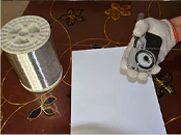Жов . 18, 2024 18:29 Back to list
CE Certification for Wire Woven Products and Their Compliance Standards
Understanding CE Certification in Wire Woven Products
In today’s global marketplace, the importance of safety and compliance cannot be overstated, especially for manufacturers and suppliers of wire woven products. CE certification is a vital aspect of regulatory compliance in the European Union (EU), acting as a marker to demonstrate that products meet necessary health, safety, and environmental protection requirements. This article delves into the concept of CE certification specifically regarding wire woven products, exploring its significance, the process involved, and the benefits that come with certification.
What is CE Certification?
CE marking, which stands for Conformité Européenne, signifies that a product has been assessed and meets EU safety, health, and environmental protection requirements. While the CE mark is a passport for products to move freely within the European Economic Area (EEA), its implications extend beyond mere compliance. It serves as a commitment by manufacturers to uphold the highest safety standards, thus building trust with consumers and stakeholders.
The Relevance of Wire Woven Products
Wire woven products encompass a range of applications, from industrial filters and sieves to intricate architectural elements and safety barriers. These products are essential in various sectors, including construction, agriculture, food processing, and automotive industries. As the applications are multifaceted, the regulations surrounding wire woven products are also diverse, necessitating careful attention to CE certification processes.
The CE Certification Process for Wire Woven Products
1. Identify Applicable Directives and Standards The initial step involves determining which EU directives and harmonized standards apply to the wire woven products in question. This could comprise machinery safety (Directive 2006/42/EC), the Low Voltage Directive (2014/35/EU), or others depending on the product usage.
2. Risk Assessment Conducting a comprehensive risk assessment is crucial. Manufacturers must identify potential hazards associated with their products, including physical risks like sharp edges or entanglement that might arise from wire woven structures.
3. Compliance with Essential Requirements Once hazards are identified, manufacturers must ensure that their products comply with essential requirements outlined in the relevant directives. This may involve product testing and quality assurance processes to demonstrate conformity with safety standards.
4. Technical Documentation Manufacturers are required to compile technical documentation that illustrates compliance with directives. This documentation should include design and manufacturing processes, test results, risk assessments, and declarations that detail how the product adheres to safety standards.
ce certification wire woven

5. Declaration of Conformity (DoC) After successfully meeting all compliance requirements, manufacturers must draft a Declaration of Conformity, which is a legal document affirming that the product complies with EU regulations.
6. Affixing the CE Mark Finally, the CE mark can be affixed to the product and accompanying documentation. This mark signals to customers and regulatory bodies that the product meets rigorous safety and quality standards.
Benefits of CE Certification for Wire Woven Products
Achieving CE certification brings several advantages for manufacturers of wire woven products
- Market Access CE marking allows products to be sold across the EU without facing additional barriers, streamlining the marketing process in one of the world’s largest markets.
- Consumer Confidence The CE mark enhances consumer confidence, assuring buyers that the product meets high safety and quality standards.
- Competitive Advantage Companies with CE certification can differentiate themselves in a competitive landscape. It signifies commitment to quality and safety, which can lead to increased consumer loyalty.
- Legal Protection Compliance with CE marking requirements helps manufacturers mitigate risks associated with product liability claims and regulatory penalties.
Conclusion
In a world characterized by increasing regulation and consumer awareness, CE certification for wire woven products stands as a testament to quality and safety. As manufacturers navigate the complexities of compliance, understanding the CE certification process becomes paramount not only for legal adherence but also for market viability. By prioritizing safety and committing to rigorous testing and documentation, manufacturers of wire woven products can effectively position themselves within the competitive European marketplace and beyond. Therefore, pursuing CE certification is not merely a regulatory necessity—it is a strategic investment in a brand’s reputation and future growth.
share
-
High-Quality Screen Stone for Modern Stone Screen Walls Elegant Facade Solutions
NewsJun.10,2025
-
High Quality Wire Filter – Cheap Stainless Steel Filter Wire Mesh Cloth & Wire Mesh Filter Solutions
NewsJun.10,2025
-
5 Micron Water Filter Cartridge - Premium Sediment Filtration, Universal Fit
NewsJun.10,2025
-
High Quality CE-Certified Gabion Boxes with OEM Options
NewsJun.10,2025
-
20x20x2 Air Filter High-Efficiency Dust Filtration for Clean Air
NewsJun.10,2025
-
Decorative Metal Mesh for Radiator Covers Custom Durable Mesh Panels
NewsJun.10,2025

